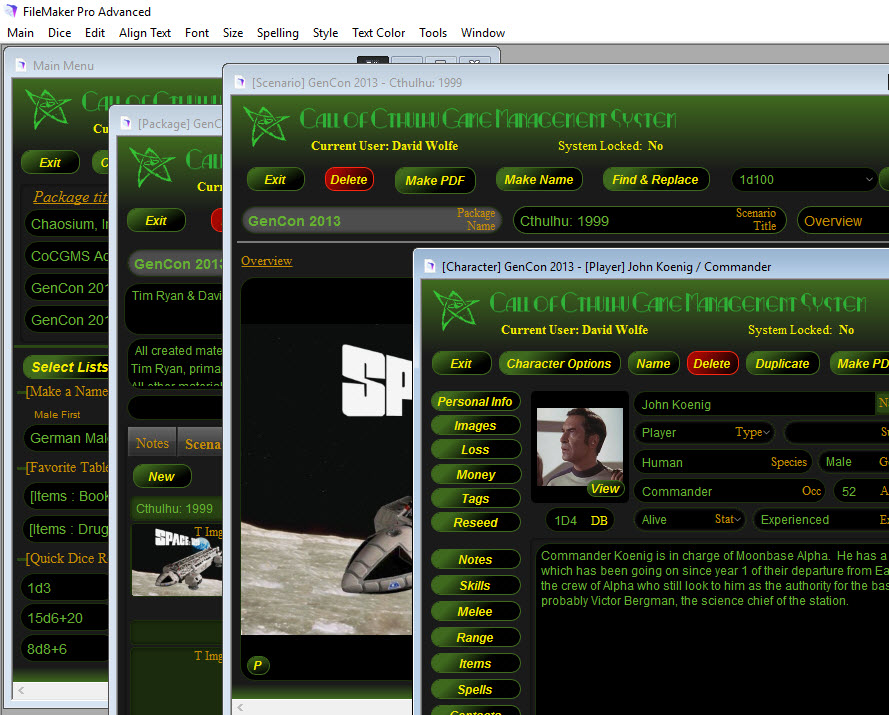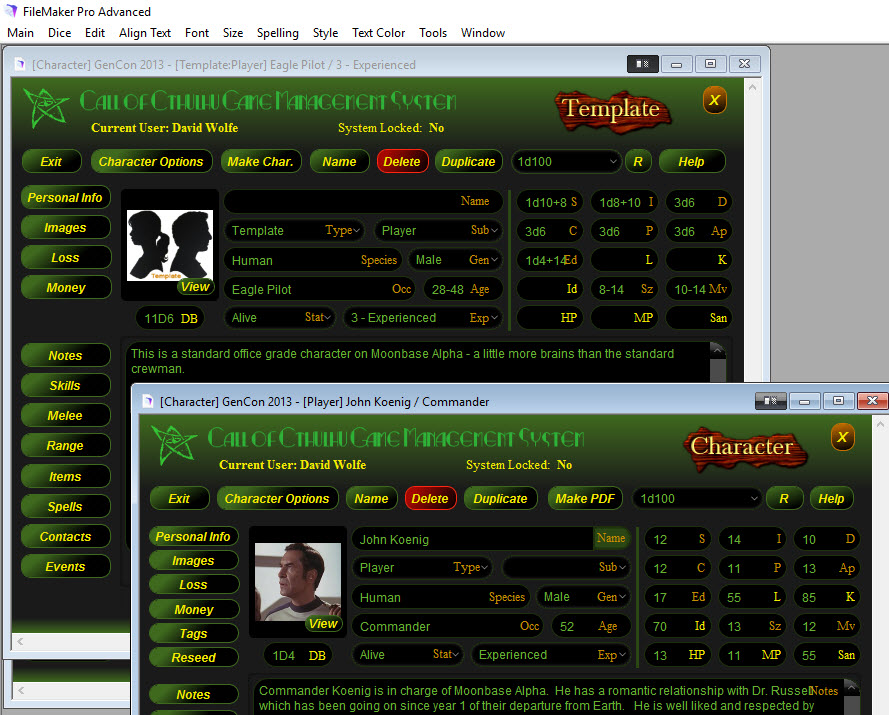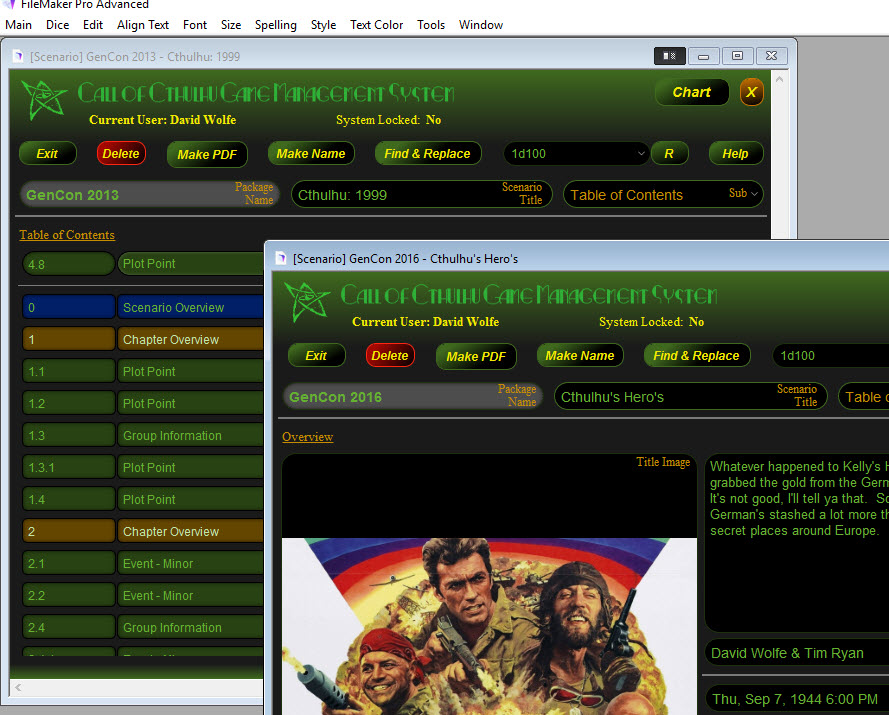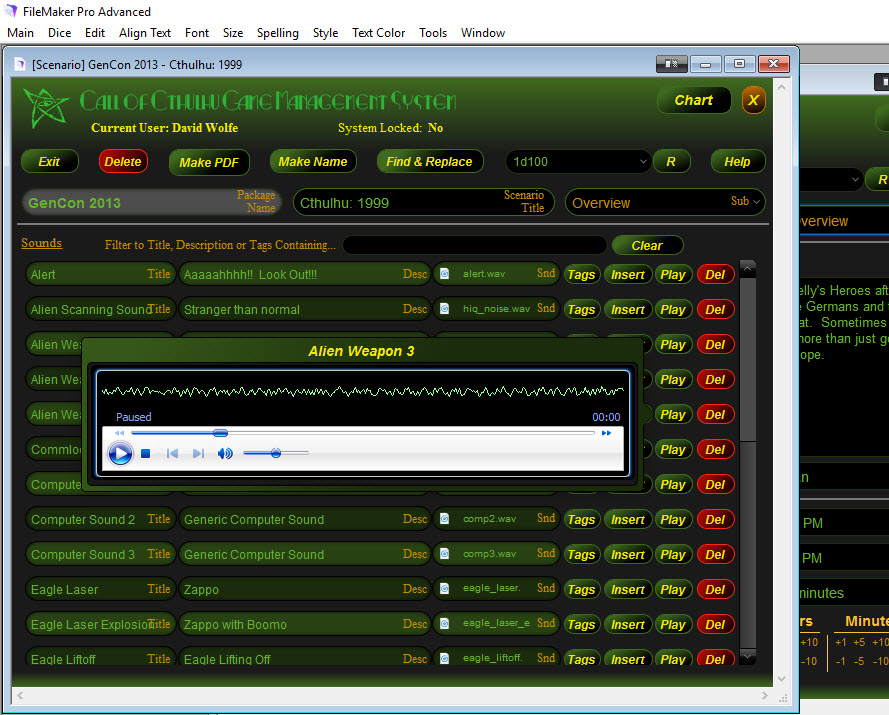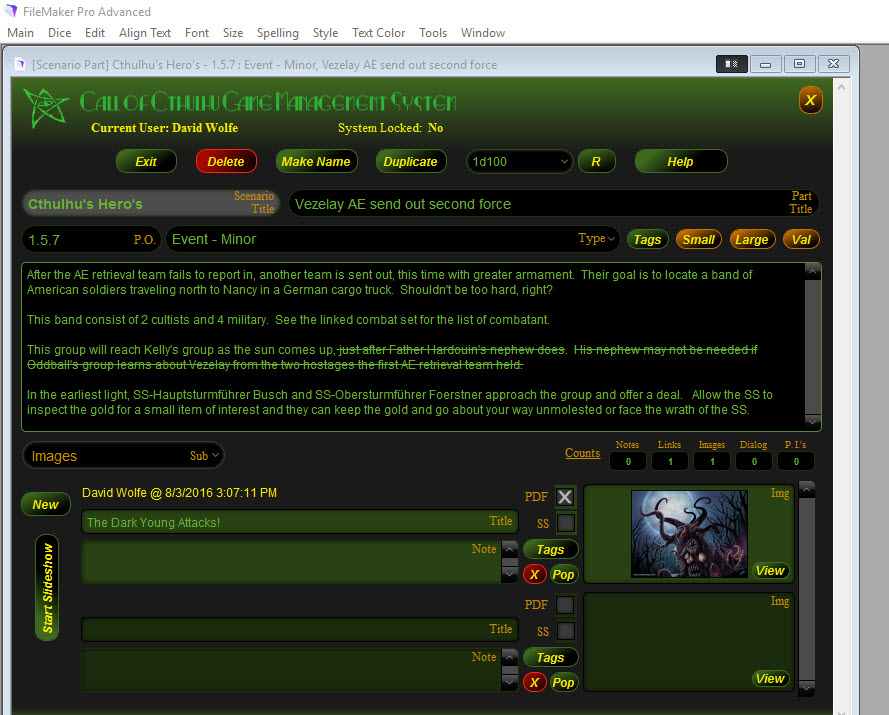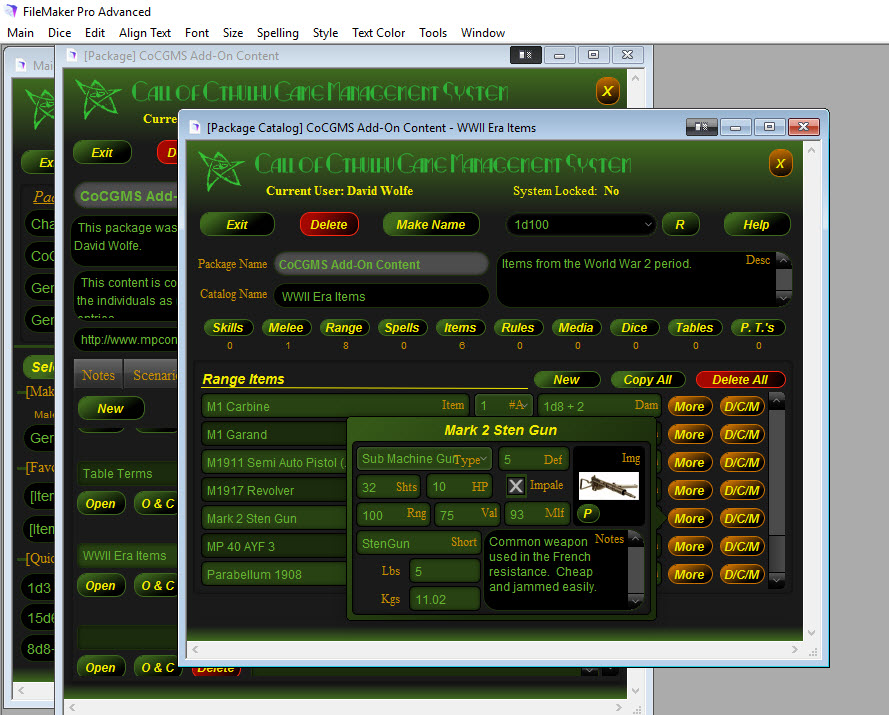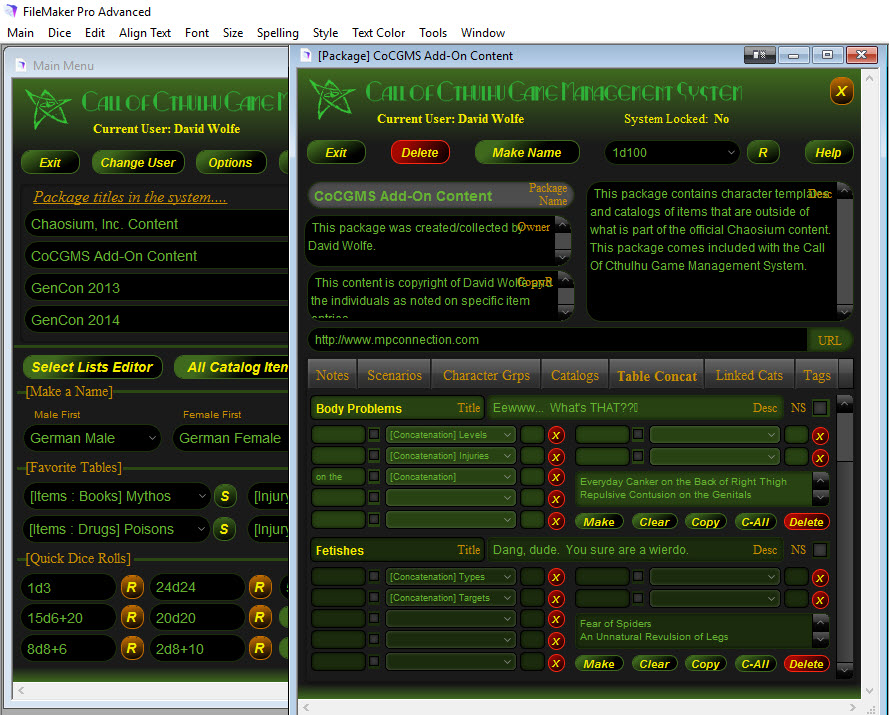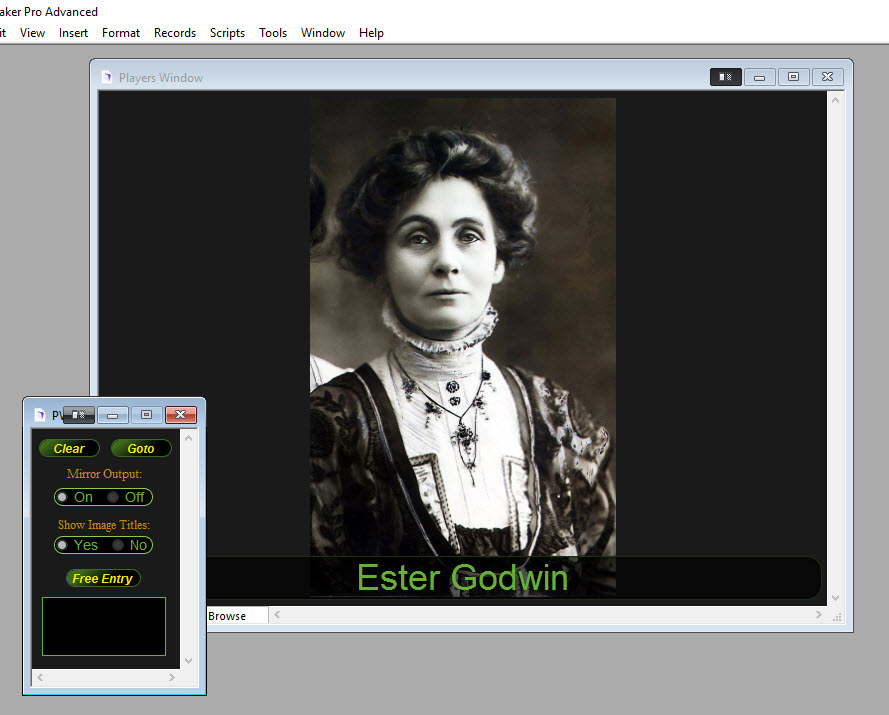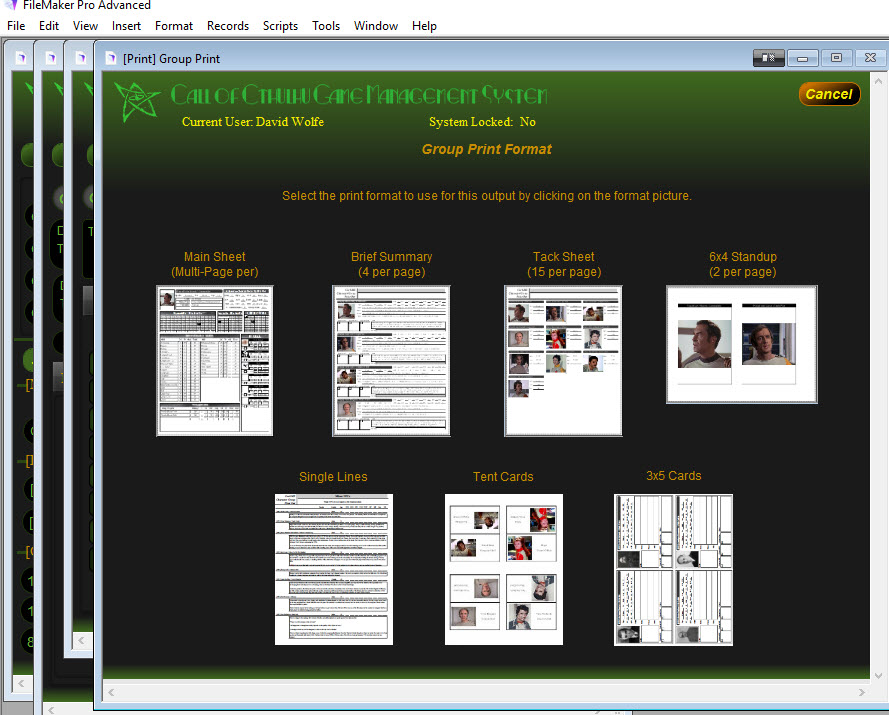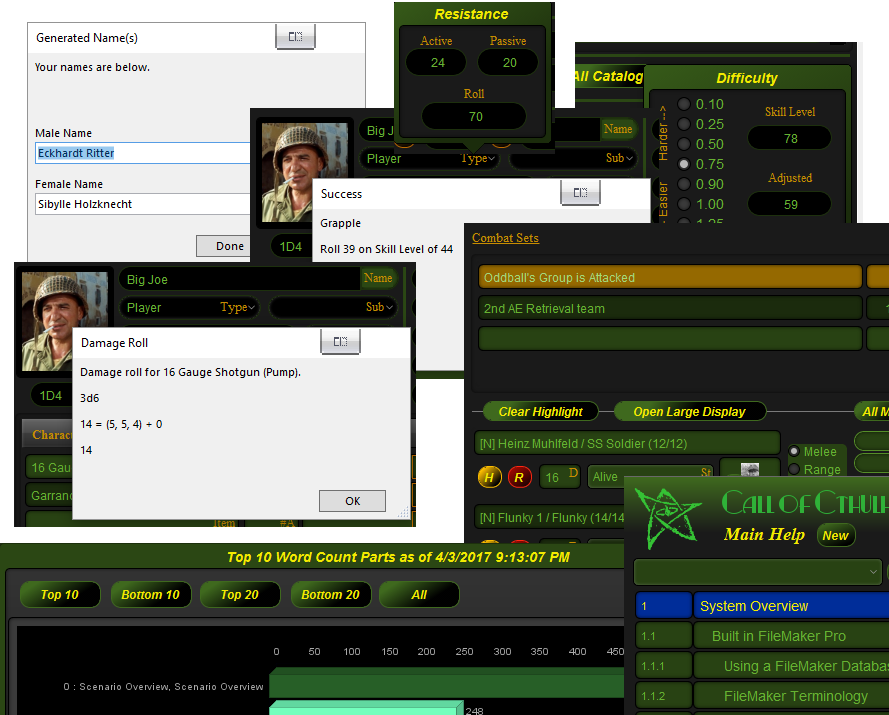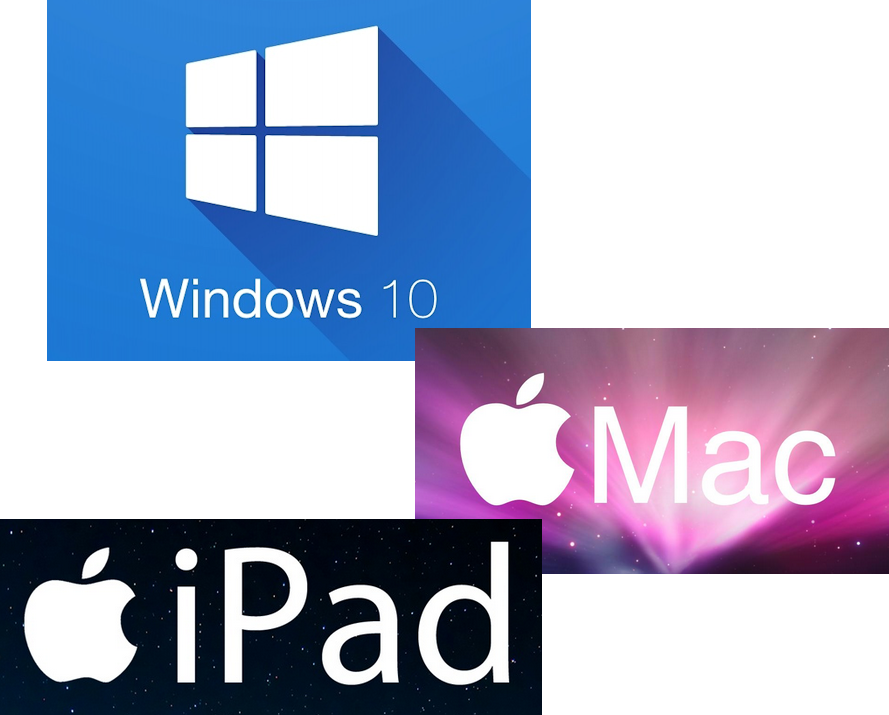Q: How does the CoCGMSv2 differ from other gaming apps like Byakhee, the Meta Creator or Hero Labs?
A: First off, the CoCGMSv2 is a dual purpose application. It can be used to create characters for Call of Cthulhu but equally important is its ability to be used as a development platform for complete scenario data. No other Call of Cthulhu gaming app does this part of the role playing process. Some other "character creator" apps may have fancier or more structured character creation processes but I've always found that in the end, I inevitably deviate greatly from the templated structure these creators present to me for the characters I want to make. They always end up being more constricting to how I like to make a character. The character records creation process in the CoCGMSv2 contains all the major elements of a CoC character and you as the GM create the content of the character. There are dice rolling "helpers" to role stats or you can simply enter the stat values that make sense for the character you have in mind. The same goes for the base catalog data central to CoC (skills, melee, range, magic, etc). You have access to alter the defaults for anything you see if your idea differs from the core rules.
In the CoCGMSv2, you create your characters (players, NPCs, monsters, etc) and if you choose, you create the scenario(s) in the system as well. The CoCGMSv2 can handle any number of scenarios that may be related to the campaign you are running. Each character in the system can be associated with a single scenario or any number of scenarios if they cross over between story lines. Within the scenario editor you can make symbolic links within scenario parts to characters that are important to that particular part. The info is then just a click away making your game flow more smoothly (if you are using the CoCGMSv2 as a live, in-game tool). You can even cross link scenario parts to have quick "where are players likely to go next" paths available as reminders or quick access links.
The CoCGMSv2 is also designed to be a transferable package environment. Once you get your game data all done and you have a desire to share it with the rest of the gaming community, just package up your cocgmsv2.fmp12 file with a simple ReadMe.txt to explain the contents and post it for others to download. You can even lock that instance of the system to prevent alteration to character and scenario data ensuring that your contents stay as you want them to.
Q: Can I track points spent on creating a complete character?
A: Yes! It's never a good role playing tactic to accidentally make one player character stronger than any other. When you allocate skill points or points to a character's abilities in melee or range weapon combat, the CoCGMSv2 tracks all of these allocations and you can see how things are stacking up on the "Character Options" window for any character record. This will keep you from getting into one of those "oh jeez, Karl has 143 added skill points but Lenny has 458. I better beef up Karl a little." moments.
Q: How is a scenario created in the CoCGMSv2?
A: In the CoCGMS, a scenario is a collections of "parts". Each part is a record in the system database. In essence, constructing a scenario is sort of like laying out the parts of a novel. You break chunks of your story up into "chapters" and then each chapter has child parts. A scenario part can have a part definition like "Chapter Overview", "Event - Major", "Encounter - Minor", "Item", etc. In fact, these part types are customizable by you to fit your own thought process. To group parts together, you assign them a "Part Order" number. Chapter Overview parts are parent parts which are given a whole number like 1, 2, 3, etc. Then, any dependent child part is given a decimal part order of the parent such as 1.1, 2.24, 5.615, etc. The CoCGMSv2 organizes all parts for you on the Table of Contents (a.k.a. the TOC) showing you the flow of your parts as they are defined by the part orders. The TOC can automatically indent and colorize part titles making it very easy to see the grouping of related sections (such as parts 1.11 through parts 1.19). On the TOC you can re-order parts as you see fit. Doing this on the TOC allows you to see all the parts layed out for you so you can judge where to move things. There are also utility options on the TOC to mass renumber parts and entire chapters to move things all at once if you need to make significant changes.
Each part can have links defined to other content in the system and any number of important images attached as well. One very helpful feature is the ability to define a "scenario start time". The scenario start time is the point in the story where the players become involved. Some of your scenario parts may be historic information giving background to the story and others parts will be as-the-story-progresses sort or parts giving future events, encounters, calamities, etc. Any scenario part can have a "When" value defined (though this is not required and may not make sense on some part types). This allows the CoCGMSv2 to display a chronological progression of timed scenario parts to you on the "Time Ordered Parts" tab. Often times your book-style organization of your scenario details may not be done in chronological order. Chapter order may not parallel story line progression. By being able to note occurrence time for a scenario part you free yourself from have to always structure your chapter sequence in chronological order. The CoCGMSv2 can show you how things will progress time-wise and even be able to calculate relative time skews from the scenario start time. I.E. a historic scenario part might have a time skew of "-12 days, 10 hour, 28 minutes" and a future event may have a time skew of "2 days, 3 hours, 45 minutes". Knowing relative time values from the point where the players get involved allows you to pace events (both past and future) more appropriately and precisely. The Time Ordered Parts tab allows you to flag which parts have past giving you the ability to track where you are in the running of the scenario.
Each scenario part can also have development notes made as reminders or half-finished ideas or whatever you might need to use the notes tracker for. Each note can be flagged to be included on the final scenario print or PDF output if the note is a production comment about the scenario part comment. Example: Note Type - Comment, Note - "A successful Spot Hidden role will reveal an abundance of occult tomes in the library as the players talk to Lord Haldon." A note like this could be flag to be included on the final print or PDF output and would be printed in the related data column on the right of the page.
Q: Your taste in color seems a bit... lacking. Can't you make the CoCGMS any prettier?
A: Yeah. I've been told that. I do my best but my strong point lies in data design. I'm afraid you'll have to stomach my personal choice in colors.
